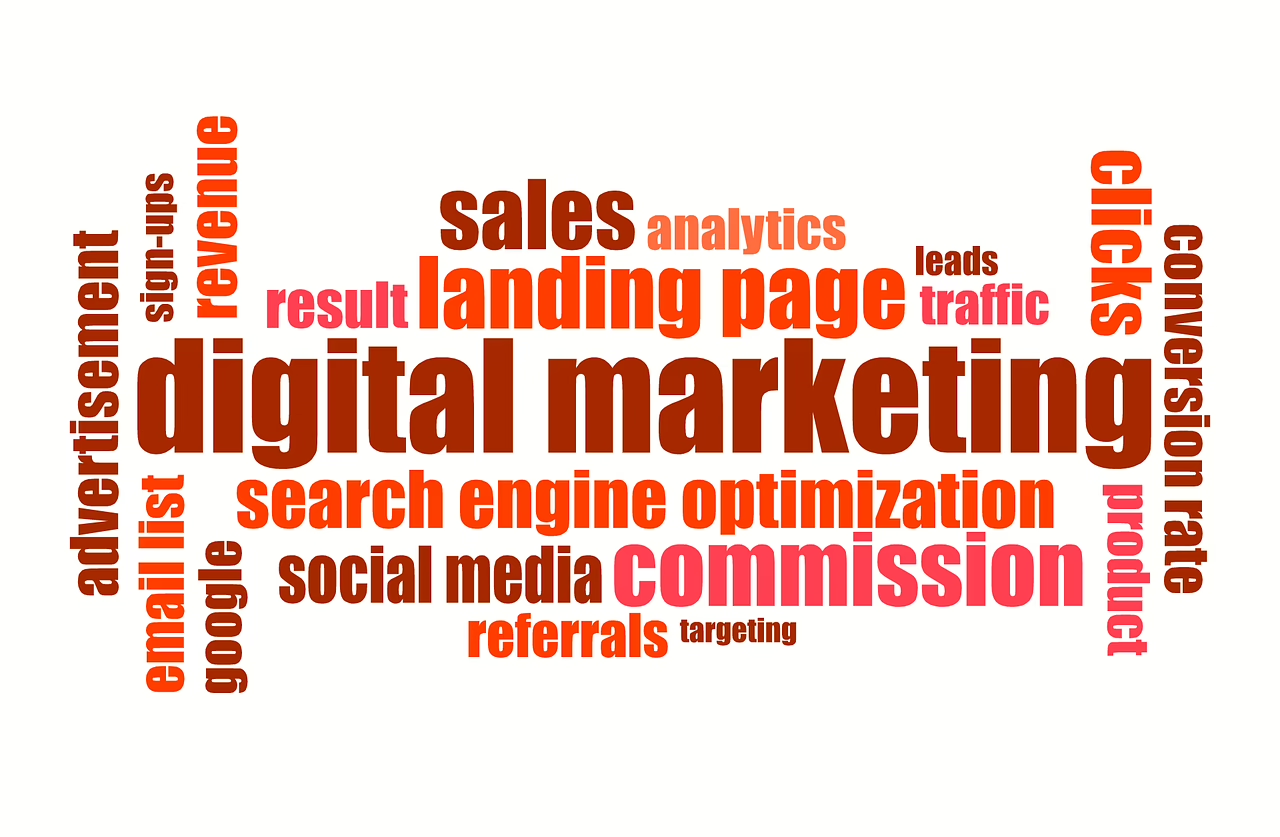Avoid These Costly Errors and Boost Your Business Success!
How is your marketing? Ever feel like you’re throwing money into a black hole? I presume you’re not alone. Many business owners struggle to get the results they want, wondering where they went wrong. Marketing mistakes happen, and they can seriously hurt your bottom line. Telling more they will happen. Now it’s time to find them and do everything to avoid them. Let’s look at the five common marketing blunders that might be costing you a huge amount of money. Spotting and fixing these errors can boost your return on investment and bring in more customers.
Your Target Audience – Never Neglect
Marketing to everyone is like shouting into the void. It’s said: “Everything means Nothing”. It’s better to focus on who really wants what you’re selling. This means understanding your ideal customer inside and out.

Not Defining a Clear Customer Persona – a Perfect Portrait Is a Must
Imagine trying to hit a target with your eyes closed. That’s what marketing without a clear customer persona feels like. A customer persona is a detailed picture of your ideal customer. It includes their age, job, interests, and what problems they face. To create one, start by gathering data. Look at your current customers. What do they have in common? Next, research your industry and find out what people are searching for. For example: if you are in tourism sector promoting different international destinations your customers are parents travelling with smaller children who look for destinations where kids have fun and they are able to rest too. No sense to send them newsletter with the best hiking spots in the high mountains. Not having a clear idea who your ideal customer is can lead to ads that no one clicks on, web content that doesn’t connect with the reader, and products that simply don’t sell.
Failing to Understand Customer Needs and Pain Points
Knowing who your customer is isn’t enough. It is only a beginning of developing the plan. You also need to know what they need and what problems they’re trying to solve. This requires research and it’s time consuming. Don’t try to skip it as you will have get back.
Surveys are a great way to ask customers directly. Social listening means paying attention to what people are saying about your brand and industry online. Also, check out what your competitors are doing. What are their customers saying? Reading different blogs and chats are very helpful. Use this info to tweak your marketing. If customers say your website is hard to navigate, fix it. If they wish your product had a certain feature, maybe it’s good to consider adding it.
Ignoring SEO and Content Marketing – Even If You Know The Base It’s Very Helpful
SEO and content marketing are like the bread and butter of online visibility, digital markrting and professional content creation. They drive organic traffic, which means free leads and potential customers. Neglecting these areas can leave you buried at the bottom of search results. Even if you produce tonnes of content the results will not satisfy you.

Neglecting Keyword Research – It’s Necessary to Create Your Own Dictionary of Words and Wordings
Keywords are the words people type into search engines when looking for something. Using the right keywords in your content helps search engines understand what your website is about. If you skip keyword research, you’re guessing which words to use. So… How will be the commnication?
Tools like Google Keyword Planner and SEMrush can help you find relevant keywords. Long-tail keywords are longer and more specific phrases. They can be a good and cheaper strategy so don’t forget it and check out. For example, instead of “best destinations India,” try: “best destinations in Goa, India for yoga lovers or to practice yoga”. These phrases can be less competitive and attract a very specific audience. What’s more important you can develope a prododuct/service to cover the needs or solve their problems. It is a fantastic approach to have your well-defined niche.
Creating Low-Quality or Inconsistent Content – It’s the Killer of Your Marketing and Sale.
Imagine a blog or your social media profile with outdated posts. Not a good impression. People won’t stick around. High-quality content is valuable, engaging, and relevant to your audience – a key factor nowadays.
A content calendar can help you stay organized and consistent. Plan your posts ahead of time. Articles, videos, good quality images and infographics can help attract and keep customers. Share your expertise and offer solutions to their problems. Use Call-To-Actions, slogans and encourage them to leave a comment. Keep it simply!
Not Tracking and Analyzing Your Marketing Efforts
Flying blind isn’t a good plan for business. Data tells you what’s working and what’s not. If you’re not tracking your results, you’re missing out on valuable insights. Again it’s useless. If you need to do something, do it for a reason. Have your expectations of making a profit met.

Failing to Set Clear Marketing Goals and KPIs
SMART and GOOD PLANNED goals are Specific, Measurable, Achievable, Relevant, and Time-bound. Nothing in general. Bear in mind. Let it be your daily mantra. You need to have your business plan for the smallest part of your activities. Instead of saying: “I want more website traffic,” set a goal like: “Let’s increase website traffic by 20% in the next three months by publishing more video content.” You have a clear goal and you know what you have to do.
Key Performance Indicators (KPIs) are the metrics that show how well you’re doing. These might include website traffic, conversion rates (the percentage of visitors who take a desired action), and leads generated. Smart goals give you a clear path and KPIs show if you’re on track. Keep eye on.
Ignoring Analytics and Data
Analytics tools like Google Analytics 4 (GA4) give you a peek into how people interact with your website. There are many useful plugins which supply data about your website and traffic. You can see where your visitors are coming from, what pages they’re looking at, and how long they’re staying. You If you invest your money and pay for ads – you will be able to collect data too. It’s a must.
Use this data to improve your marketing. If a certain page has a high bounce rate (people leaving quickly), maybe it needs better content or a clearer call to action. Watch your metrics, and use the information to change your strategy when needed. Google GA4 becomes more and more data friendly and very helpful.
Poor Social Media Engagement
Social media is more than just posting updates and definitely it is not about adding countless quantity of images. For example: if you have a fashion store and want to sell your clothes doesn’t make sense to add 30 images within 10 min. Professional social media is about building relationships. It’s a place where you can educate your customer and underline your values, encourage people to participate in the adventure. Ignoring your audience can hurt your brand’s reputation.

Not Responding to Comments or Messages – It Happens Very Often!
Picture it walking into a store and the staff ignores you. You wouldn’t feel valued, right? It’s the same on social media. Bad manners and very unprofessional! When people comment or message you, they expect a response. They write because they are interested in and want to have knowledge about. Spend some time and always verify if any comment wasn’t skipped.
Create a plan for replying to messages and comments quickly. Thank people for their feedback, answer questions, and address concerns. This shows you care and builds trust. You can always use a nice image too. It works out! Want to say “hello“?
Posting Inconsistently
Imagine tuning into your favorite TV show, but it airs randomly. You’d probably stop watching. Consistency is key on social media. Create a content schedule and stick to it. Social media management tools can help you plan and automate posts. Telling more you can have a clear vision what will happen during a month. Staying active keeps your audience engaged and reminds them that you’re there. If they follow you – there must be a reason. They want to hear from you. You are important to them.
Website is Not Mobile-Friendly – Optimise for Different Screen Sizes
A mobile-friendly website adapts to fit different screen sizes. It’s easy to navigate on a phone, loads quickly, and looks good. Not mentioning that we are like mobile crazy and cannot exist without the device.
Use Google’s Mobile-Friendly Test to see how your website performs. If it’s not up to par, consider a responsive design. This means your website will automatically adjust to fit any device.
Ignoring Mobile Advertising
Mobile advertising lets you target specific users based on their location, interests, and behavior. This means your ads are more likely to be seen by the right people.
Mobile ad formats include banner ads, video ads, and app install ads. They’re designed to be viewed on smaller screens. If you are only focusing on desktop ads, you’re missing a big chance to reach people on the go.

Marketing mistakes can be costly. Overlooking your audience, ignoring SEO, not tracking results, poor social media engagement, and not optimizing for mobile are all common pitfalls. But you can fix these mistakes. Review your marketing efforts often and make changes when needed. Staying alert will help you get the most from your marketing budget. Take action now, and watch your ROI grow.
